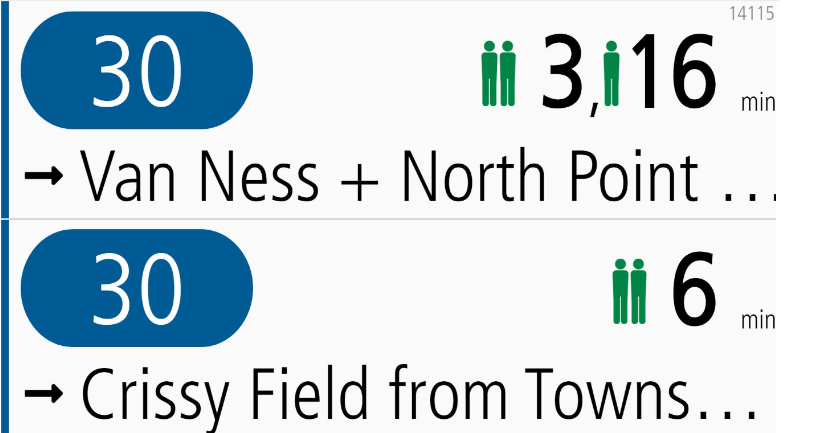By Christopher Ward

Next Generation Customer Information displays will show capacity indicators: One figure means there are many seats available. Two figures indicates that there are likely a few empty seats available. Three figures tell you that there’s likely only standing room available.
The SFMTA continues expanding trip planning and accessibility features and improving Muni predictions. This is part of the ongoing Next Generation Customer Information System (CIS) project. One of the newest features is a capacity indicator.
A capacity indicator helps customers understand how much space is available on vehicles. Customers can see the indicator on our Next Generation displays in the bus shelters and on train platforms. Customers may use this information to make travel choices. For example, customers can choose to wait for a less full vehicle or take an alternative route.
As of November 2022, Muni vehicles equipped with automatic onboard passenger counters send capacity information to our Next Generation CIS. This information is now shown symbolically with stick figures. One figure means there are many seats available. Two figures indicates that there are likely a few empty seats available. Three figures tell you that there’s likely only standing room available.
Customers should always yield the priority seating area for people with disabilities, older adults, and pregnant persons.
We’re excited to finally bring these features to our customers and build a system that will help make Muni travel even more efficient, reliable and enjoyable.
Published December 19, 2022 at 11:08PM
https://ift.tt/v6j87r0
Comments
Post a Comment